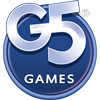Layton Hawkes explained to his Casual Connect Asia 2015 audience how a new development approach helped Halfbrick double Bears vs. Art’s day seven metrics after a problematic start. “We developed a really core focus on retention,” he says. “And we learned a new approach that eventually led us to global launch.”

Layton Hawkes, game designer at Halfbrick, maintains, “There is nothing better than seeing happy faces when people play my games and creating something that entertains, delights and brings genuine joy to someone’s life.”
As the son of a psychologist and a social worker, Layton has always had design in his blood. He grew up in an atmosphere of questioning, analyzing and observing behavior. This upbringing developed his inquisitive nature and was perfectly suited to a career in design.
Games: A Completely Absorbing Medium
During his early school years he began drawing complex game-like levels on paper, and by the age of 8 he was drawing endless mazes and platform levels. He decided as a child that CG animation would be his career, so he attended all the conferences on the subject that were open to the public. He was drawn to it by the mix of the technical and the artistic; the creators were making something both visually stunning and technically astounding. And this was partly what attracted him to games design, since this is also a mix of technically complex systems and artistic beauty.
As a child he had no idea his future would have him creating worlds, but he naturally gravitated toward this role. Creating and refining new, compelling ways to play comes naturally to him. As he says, “It is something I profoundly enjoy. I have channeled this ingenuity and passion for games into my learning and research.”
When Layton discovered the sheer scale, the intricacy and the imagination that went into creating game worlds, he knew he wanted to be a part of it. “No other medium can completely absorb me in an experience and a world the way a game can,” he says. “That feeling inspired me to pursue my career in game design.”
Now, at Halfbrick Studios, he is one of a five-person team developing new IP. They have worked on Fruit Ninja, Jetpack Joyride and Fish Out of Water. Currently they are working on new content for Halfbrick’s latest release, Bears vs. Art.
As a member of a small team, he is of necessity a generalist with input into many aspects of development, including systems design, user interface, level design and many others. Fortunately, he finds moving between so many varied tasks both rewarding and creatively satisfying.
Before coming to Halfbrick, Layton had the opportunity to work on serious games for various clients while in the Curriculum Innovation Unit at Victoria University in Melbourne, Australia. He was also involved with exchange and directed research at Aalborg University in Copenhagen, Denmark, where he explored the impact of visual cues in player decision making in level design.
He has won many awards while a student and a developer, and his broad range of experience from serious, educational games to directed research has allowed him to acquire the skills and knowledge critical to developing casual games.

Chasing Inspiration
Layton describes himself as a visual thinker whose creative process usually begins with picture. He finds thinking visually has many benefits for a designer, making it much easier to consider feedback and what the moment-to-moment will be like for players. “Inspiration is a fickle thing,” he says. “Anything and everything at the right moment can inspire a good idea.”

He finds design inspiration in many, many places: reading a book, standing at an architectural lookout, juggling. One interesting place where he found inspiration was a painted ceiling which he simply looked at from a different angle than he had before. Getting out of his comfort zone is critical to stimulating new ideas for game design. He insists, “Have as many new experiences as possible to fuel your creative mind. It works!”

Creative blocks will inevitably occur. At these times he considers it essential to free the mind from its intense focus on the problem rather than the solution. As a child, Layton was enthralled with the circus, so at an early age he learned to juggle. He always keeps a set of juggling balls at his desk and finds juggling remarkably effective to remedy all kinds of creative blocks.
The Development Process

Game development rarely is a smooth or easy road. One of the most difficult times for Layton came during the first half of the soft launch of Bears vs. Art, when the game was tracking and performing poorly. He admits they were cautious and unprepared, so this phase of development became a painful process of roadblocks and setbacks. The team recovered from this painful experience by staying agile and embracing failure as a lesson — as he put it, “Not just saying it, living it!”
The team shifted the way they worked with a new and riskier method of developing the game that freed them to experiment. And as they experimented with different ideas, they identified what players really enjoyed and in the process turned the game around.
The most exciting time in his career was when the first game he worked on at Halfbrick, Fish Out of Water, hit number one on the US free charts. He emphasizes that this was the result of hard work and dedication. The team poured so much love and effort into the game that it showed in the finished product.
Tips for Designers
If you want to develop games Layton recommends getting some of the free development tools such as Unity, Unreal or level editors to start making your ideas come to life. Build games, make levels, write stories and read lots of books on design and psychology. Play games critically to form your own opinions about what feels compelling to play and what doesn’t. He advises to never stop learning and improving; there are entry-level design jobs out there for those who are dedicated and can show work displaying their skills, passion and creativity.
What the Future Holds for the Industry
The greatest change Layton sees coming in the games industry is community driven-development. This trend has already started, with platforms such as Steam Early Access and Kickstarted games blurring the lines between player and developer. Halfbrick has already begun moving in this direction to involve their community at an earlier stage in the development process.
Comments









